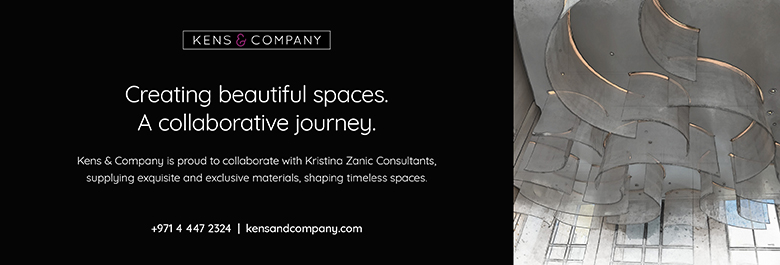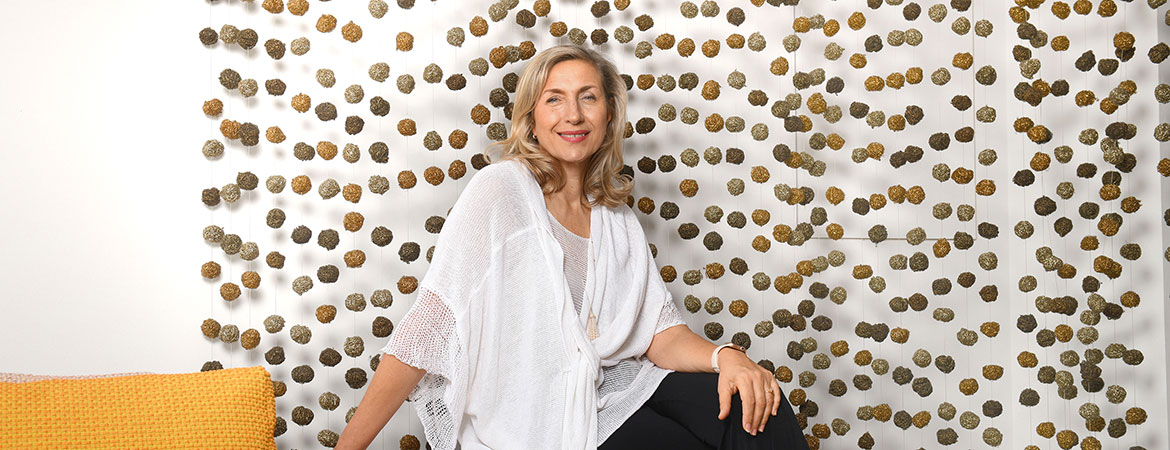Leading interior design firm Kristina Zanic Consultants has consistently set the benchmark for innovative and refined design in the Middle East. With an impressive portfolio in the luxury hospitality sector, the studio has established itself as a regional powerhouse with projects in over 20 countries across the Middle East, Africa, Asia, and Europe.

The firm opened its Saudi office in March 2022, with its local team of designers crafting bespoke interiors that offer memorable experiences. We spoke to CEO Kristina Zanic and Partner and Executive Director, Amani Al Ibrahim, to find out more about the Saudi marketplace and the Kingdom’s remarkable growth in the tourism and hospitality sectors.
Saudi Projects: There has been a lot of talk about Saudi Arabia creating its own design language within the upcoming tourism and hospitality developments. Do you think there is a Saudi design ‘template’?
Kristina Zanic: No, the situation is quite the opposite, in fact. With Saudi Arabia’s vast territory and the variety of projects under development, it’s actually impractical for architects and designers to limit themselves to a specific approach or ‘toolkit’ for projects in the Kingdom.
We as designers always look to a project’s unique characteristics and use those to guide us in developing a design that uniquely captures its essence. To start with, the provinces within the country vary widely in terrain, history, and culture, and this helps in shaping distinctive design concepts for projects. In addition, particularly in hospitality design, there is a strong demand for a wide variety of project types and locations, from modern urban and artsy boutique hotels to laidback island resorts and nature lodges, each looking to create a different guest experience. Add to this the sheer variety of hospitality operators entering and expanding within the country, each with their own range of hotel brands and brand guidelines, and it becomes clear how varied the canvas is.

All of this is great news for us as designers because no one project is like the other and we are being challenged to create something unique every time, leading to a rich and diverse design landscape.
Saudi Projects: Is it important to have a local team that understands the many differences between the various regions, etc.?
We believe it’s extremely valuable to have a team on the ground that is immersed in the country and with a deep understanding of the culture
Amani Al Ibrahim: We believe it’s extremely valuable to have a team on the ground that is immersed in the country and with a deep understanding of the culture.

A local understanding of the cultural nuances across the country helps to inform the design process, create an authentic character for a property, and root it in its locale. Additionally, many of our Saudi team members happen to be in their twenties and thirties, and this adds a fresh and relevant outlook that aligns with Saudi Arabia’s predominantly young population.
Sustainable building and design are high up on the Saudi agenda, and this of course promotes greater interest and implementation
Saudi Projects: Is there a deliberate effort in Saudi Arabia to create its own design language?
Kristina Zanic: As nice as it may be to have a neat definition of Saudi style, it’s actually counterproductive to the country’s objectives towards design creativity and excellence. The fewer restrictions or codes to abide by, the more creative freedom designers are allowed, and the more varied the outcome is.
Amani Al Ibrahim: Even though there is no national design template, there are specific design elements that belong to each province and feel at home there. We also see a conscious effort across the board to preserve local heritage and retell it using architecture and interior design. This is especially important during this period of transformation and with so much of the country’s design landscape taking shape.

What’s important to note, though, is that this is being done through a contemporary lens, so that the outcome doesn’t appear dated or traditional and is able to appeal to modern tastes. We’re seeing most project briefs ask for a way to preserve tradition through design but keep with the times. The objective is to create a harmonious blend of authentic and modern aesthetics.
Saudi Projects: Can you share any previous design narratives that have particularly reflected this?
Amani Al Ibrahim: One example would be our design for the Renaissance Stage Hotel in Riyadh, currently under construction. For this hotel, we looked at how the interiors could help reflect a blend of old and new Riyadh and celebrate the flourishing creative arts in the city. The design is all about bold style, vivid colors, and unique statement pieces, all inspired by contemporary Saudi fashion, jewelry, and art. The designs feature handcrafted fabrics, art, and accessories that showcase history and culture in a modern way.

Saudi Projects: What challenges are there currently in the Saudi Arabian market pertaining to design?
Kristina Zanic: For our part, we feel privileged to be involved in many of the ambitious and groundbreaking projects in Saudi Arabia, and I’d say there aren’t many challenges to face. The most obvious one, though, would be that those ambitious plans and rapid development pace lead to tight project schedules at times. We of course prefer to have more time for design, but with a fairly large team, we’re thankfully able to design on time and quality.
As nice as it may be to have a neat definition of Saudi style, it’s actually counter-productive to the country’s objectives towards design creativity and excellence
Another thing is that the local design industry needs time to mature to the point where it can meet industry demand. But this is easing with the emergence of local manufacturers and artists, who are able to easily and quickly respond to our needs and customize elements in line with local requirements. In addition, more international suppliers are establishing a presence in the Kingdom, which also facilitates procurement.

Saudi Projects: What are the biggest trends you are seeing in KSA with regard to design within the hospitality industry?
Amani Al Ibrahim: We’re seeing a surge in interest in the art scene, specifically in how art can add to hospitality interiors. Whether within new-build projects or property refurbishments, there is a focus on curating art pieces with unique character that tell the property’s design story. This is happening in line with a wider initiative to promote local creative arts and creative expression within the country. Also, as mentioned, there is a general movement to create contemporary spaces with a local traditional touch that appeals to all ages and reflects a modern cultural outlook.
Saudi Projects: As a design firm, do you prioritize the use of sustainable materials?

Kristina Zanic: As a general philosophy, we aim to design as sustainably as possible across all our projects, using responsible products and materials and sourcing locally where available. Practically speaking, this can be a challenge for some projects when faced with limitations relating to high volumes, tight timelines, strict budgets, or a lack of local suppliers and raw materials.
Having the client fully on board and committed to these goals is a huge advantage and ultimately determines to what extent this can be achieved.
Sustainable building and design are high on the Saudi agenda, and this of course promotes greater interest and implementation. We’re also lucky to be working with developers and operators who prioritize sustainability. Another encouraging thing is the growing number of Saudi-based manufacturers working with natural materials or recycled waste and using ancient techniques to innovate and develop new sustainable materials.

Saudi Projects: As Riyadh begins to transform itself into a New York or London, what is the future of design in the Kingdom, and how do you see yourself contributing to it?
Kristina Zanic: I think design in the Kingdom will reflect a forward-looking, faster-paced, creative culture that is in touch with its roots. The designs will simultaneously be culturally authentic yet globally appealing, reflecting a connection between the country’s history and future. We’re extremely happy to have a role to play in shaping the local hospitality offering. It’s a very exciting time for design in Saudi Arabia!
Kristina Zanic Consultants
